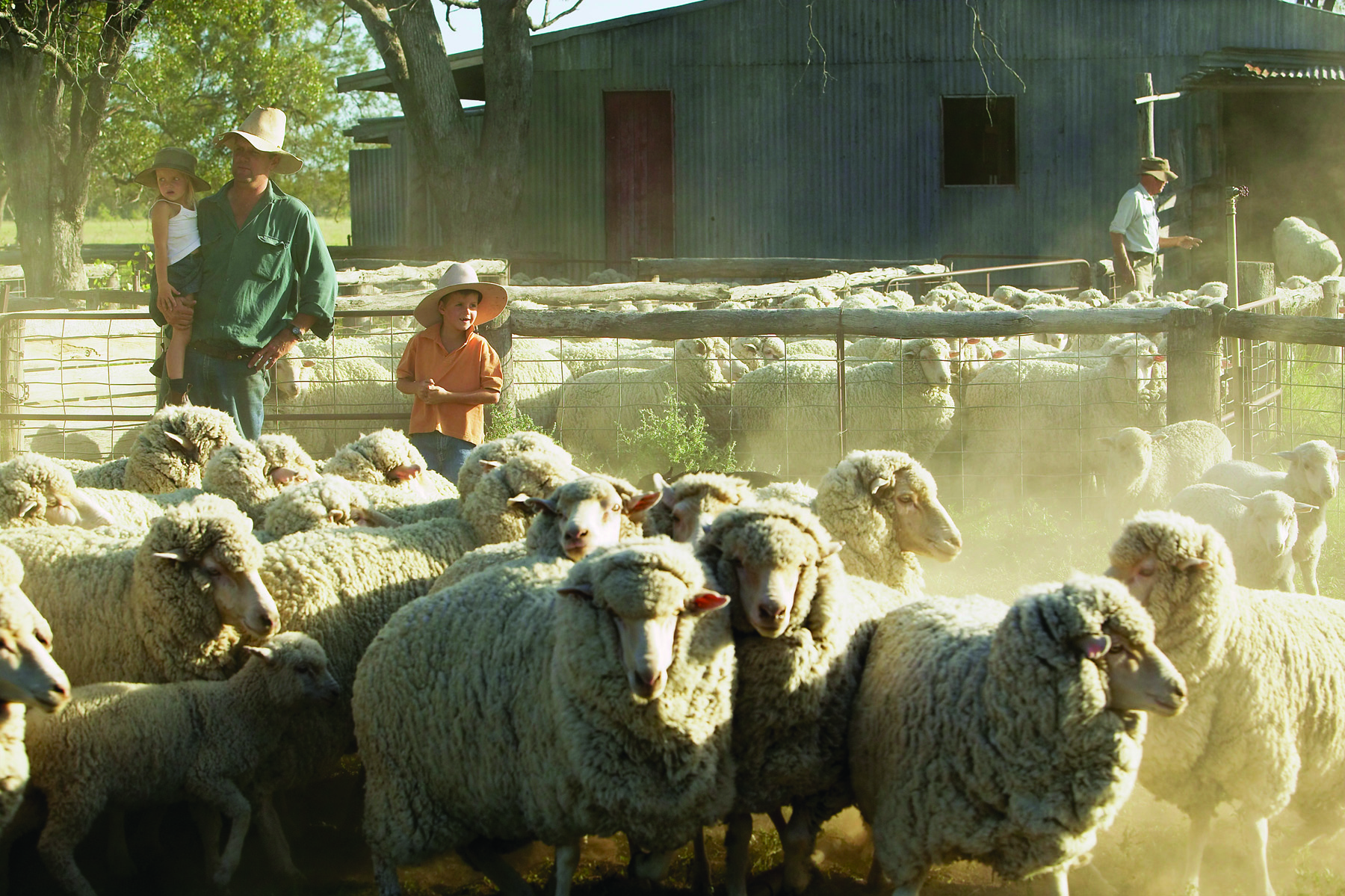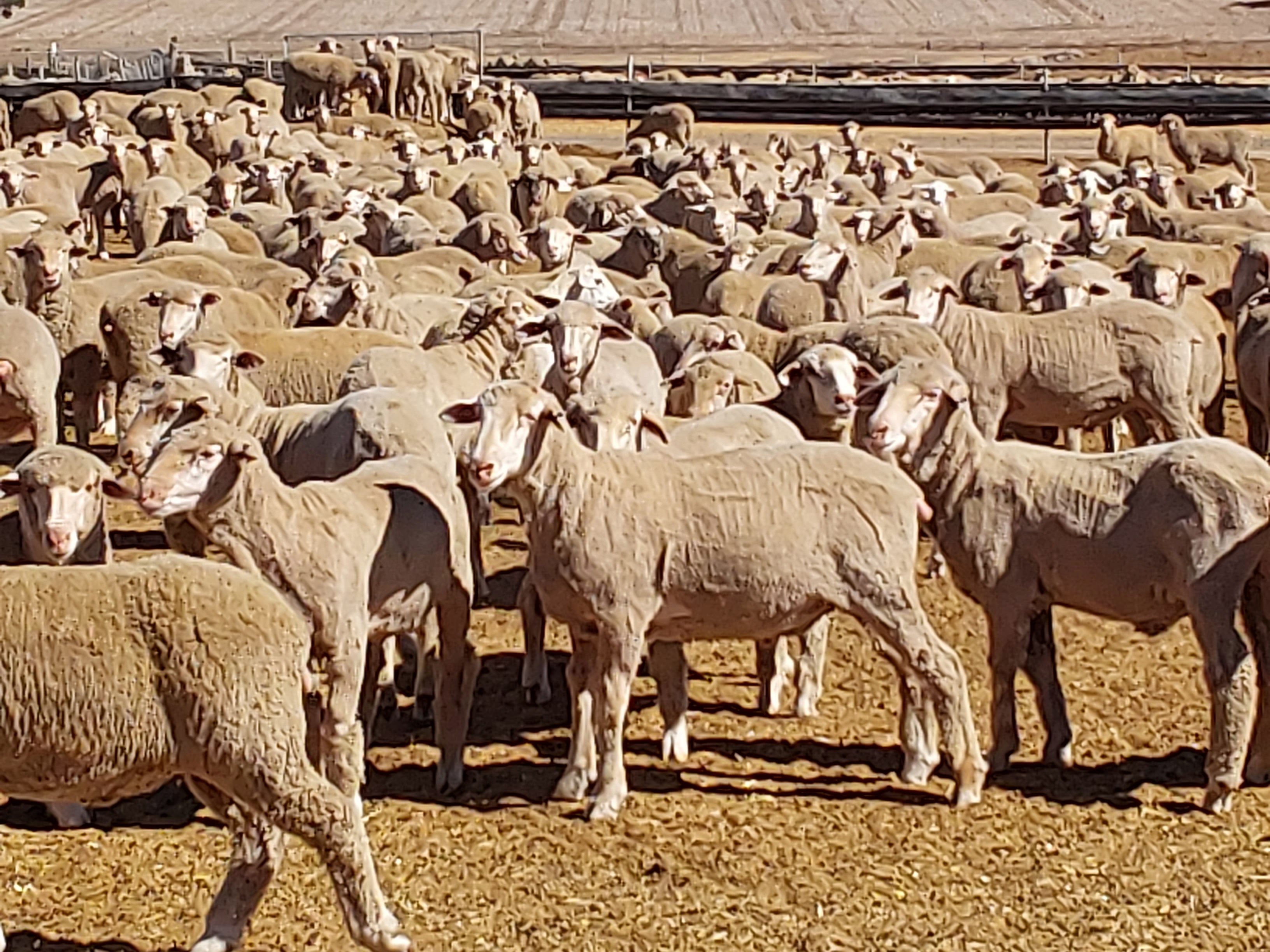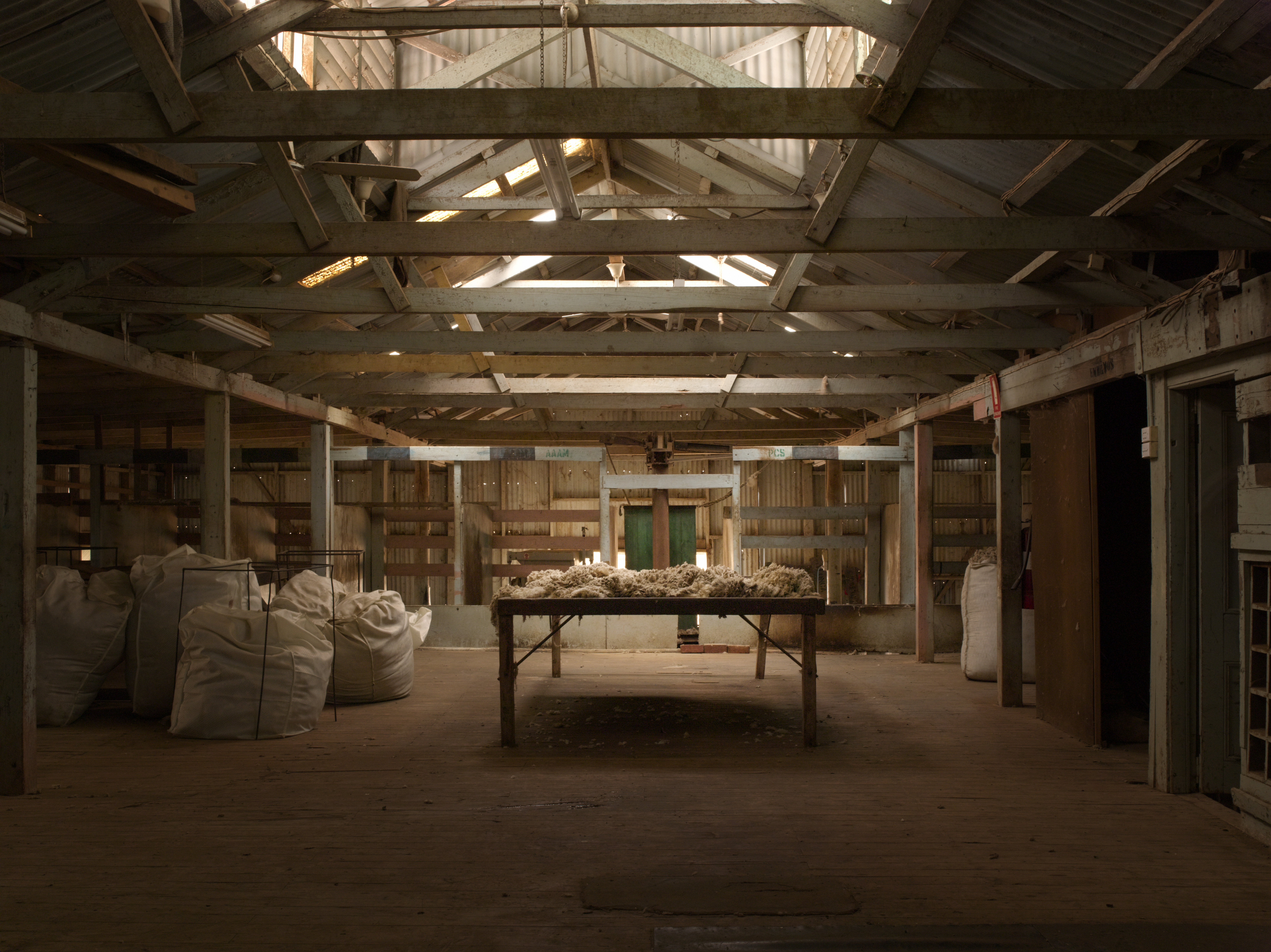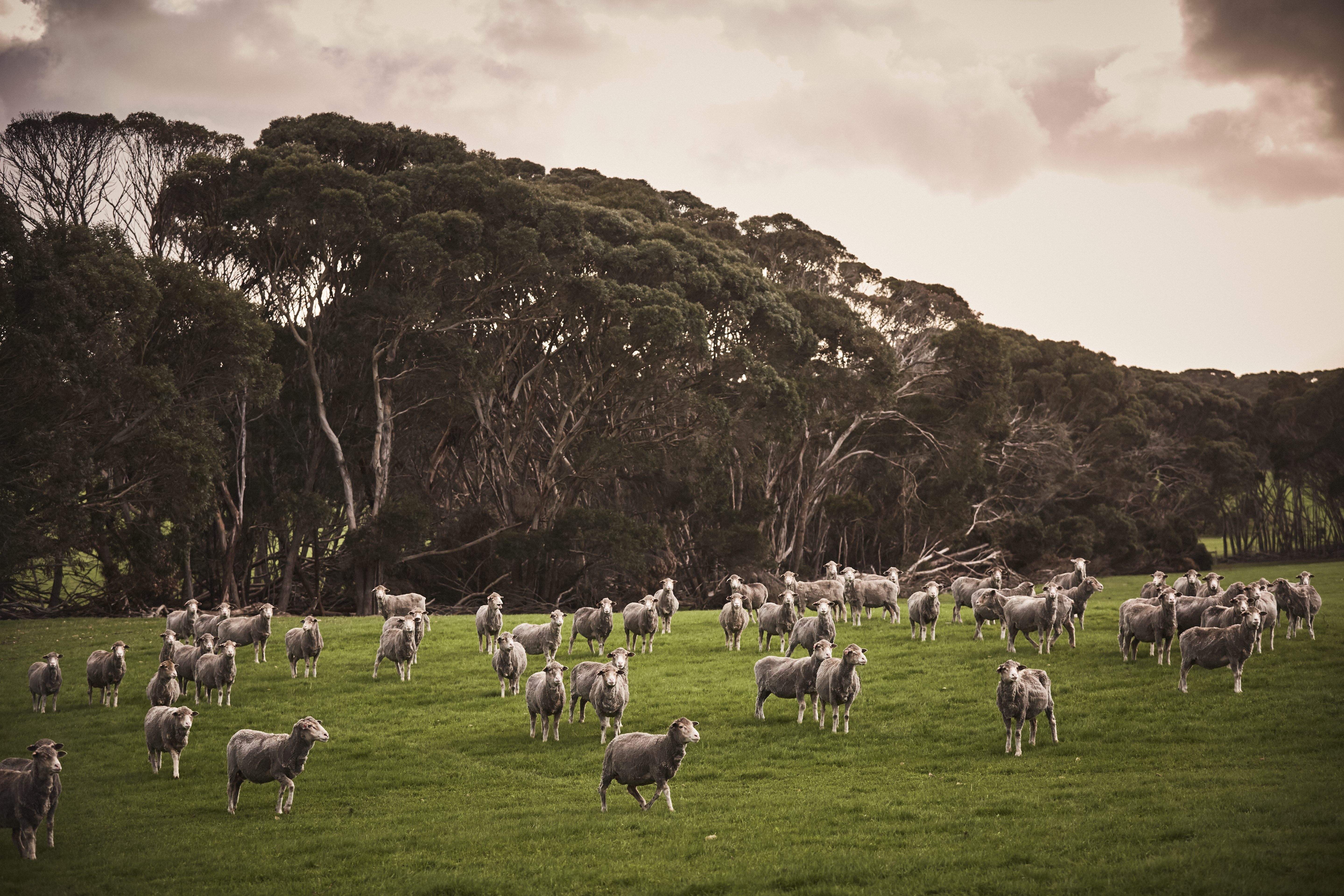Making more money out of wool sheep: Data to decisions, markets and management

There are viable pathways for WA woolgrowers to remain profitable and optimistic about the future of woolgrowing in WA. This article provides some practical tips on how to make more money out of wool sheep by leveraging data to improve decision-making, optimising management practices, and being proactive to take advantage of growing market opportunities for Merino’s in WA.
Recently, AWI Extension WA held a webinar on “Making money out of wool sheep” to support WA woolgrowers with decision-making and being proactive to help overcome market challenges and to make more money from wool sheep. You can check out the recording of the webinar here. We learned a lot during the webinar, so we encourage you to check out the recording if you haven’t already.
During the webinar, we heard from three top industry experts – John Francis of Agrista, Michael Young of Farm Optimisation Group, and Geoff Bilney of Glenpadden Farms – who shared their perspectives and practical tips on enhancing profitability within sheep enterprises in Western Australian conditions. The speakers covered topics ranging from leveraging data to improve decision-making, optimising management practices, and how to access growing market opportunities for Merino’s here in WA.
Moving beyond data collection: The path to informed decisions
John Francis kicked off the webinar by emphasising the critical importance of moving beyond mere data collection to derive actionable insights that drive informed decision-making. John introduced the knowledge pyramid, illustrating the progression from raw data through information and knowledge to wisdom. The presentation highlighted that while many woolgrowers operate at the data collection level, by recording data such as flock history, livestock numbers, pregnancy scanning results and financial transactions, the real power lies in processing this data into meaningful information. This involves compiling, standardising, and organising data to provide context for interpretation.
The subsequent stage, knowledge acquisition, involves analysing information, understanding its context, and expressing it in a way that supports judgments and decision-making. Staying at the disaggregated data entry level often leads to reactionary and potentially risky decisions. The goal is, therefore, to move towards anticipatory decisions based on historical patterns and informed understanding.
Just think about the insights and opportunities that you might unearth if you sat down and looked at all of your data in one place, across several years. John pointed out that top-performing producers (in the top 20%) consistently achieve double or even triple the profit per dry sheep equivalent (DSE) compared to average producers across various enterprises. This superior profitability stems from their ability to derive insights from information and truly understand their business. So just remember, there is always an opportunity for improvement to increase profitability.
There are four hard questions that you can ask yourself when looking at your data to help you be more anticipatory in your decision-making and, therefore, become a more profitable wool sheep enterprise. Woolgrowers should regularly ask themselves these questions to truly gauge the depth of their business knowledge and move from reactionary to anticipatory decision-making.
- Do you know the wool and meat production per DSE (Dry Sheep Equivalent) and per hectare? This assesses efficiency relative to energy consumption and land utilisation, a scarce resource
- Do you know the financial performance per DSE and per hectare? Understanding operating profit in these terms highlights the impact of stocking rates and resource utilisation on profitability
- Do you know your cost of production? This ratio of operating costs to production (per kilogram of wool or meat) is vital for understanding enterprise efficiency
- Do you know your labour efficiency? Given that labour is a significant cost, understanding and managing it can significantly impact profitability. To do this, simply allocate time in a diary for all staff across your different operations to truly understand where time is going
John illustrated the potential economic benefits of moving beyond data by presenting a simplified example of increasing pasture production through extra fertiliser application and improved utilisation from an increase in stocking rate of 2 DSE/ha. This modest 33% increase in production led to a 66% larger rise in profit due to largely fixed overhead costs. This example highlighted that significant opportunities exist within all wool enterprises for those who take the time to move up the knowledge pyramid and derive insights from their data by asking themselves four hard questions.
The economics of different sheep farming systems in WA: Optimising lamb sale times
Building on the foundational principles of turning data into more profitable management decisions, Michael Young of Farm Optimization Group provided an economic perspective on sheep farming in WA, particularly in the context of industry challenges such as the phase-out of live export and fluctuating wool prices. Despite these headwinds, Michael asserted that sheep farming, especially within mixed farming systems, is likely to remain profitable. For those previously targeting the live export market, he outlined three potential adaptation strategies:
- Increasing cropping area
- Adjusting lamb sale times
- Shifting breed focus towards greater meat production
Michael highlighted that simply increasing cropping might not always be the most profitable solution due to factors like soil suitability, rotations, stubble utilisation and machinery/labour constraints.
Michael then delved into the economics of different lamb sale times, comparing light lamb, heavy prime lamb, shipper lambs, and selling wethers into the mutton market. The analysis showed that while shipper lambs performed well under passive management, heavy prime lamb production is a highly profitable alternative, but it demands optimal nutrition management. A sensitivity analysis on meat and wool prices indicated that even with price fluctuations, a well-managed Merino Prime Lamb flock structure, balancing meat and wool production, remained a robust and profitable option. Michael highlighted advancements in technology and research, such as in-paddock weighing, improved grazing strategies, and genetics, which are aiding producers in achieving these optimal management targets.
For woolgrowers considering a potential shift towards more meat-focused genetics, Michael presented an economic comparison of prime lamb, self-replacing Merino (mated to terminal sires), specialised crossbred lamb production (buying in replacement ewes), and composite flocks. His modelling, based on average prices, indicated that Merino-based systems, particularly the specialist Merino terminal sire flock, remained the most profitable, although the latter carries the risk of ewe purchase price variability. Notably, even with a 20% lower wool price than the average used in the analysis, the Merino Prime Lamb option still outperformed the composite flock. Michael concluded with an optimistic outlook for mixed farming systems with wool still playing a vital role, emphasising the importance of management adaptation for those previously reliant on the live export market and recognising the continued value and diversity that wool offers.
Growing market opportunity: Merino lambs in feedlot systems
The final presentation was from Geoff Bilney of Glenpadden Farms, who offered a practical perspective from a sheep feedlot operator who processes a significant number (around 30% of their feedlot intake) of Merino lambs for WAMMCO's North American market. Geoff debunked the notion that Merino lambs are unsuitable for meat production, showcasing photos demonstrating that their carcase confirmation can be comparable to crossbred lambs once they reach the desired weight in a feedlot system. Glenpadden Farms targets a minimum six-week feeding period to achieve a carcase weight of around 25kg from a 42kg live weight lamb. He highlighted a market window in June- July where Merino lambs, even up to 13 months old, are well-suited to fill processor demand.
Geoff also emphasised the added value of wool and skin from Merino lambs, which can offset costs compared to crossbred lambs that often have no fleece value in a feedlot scenario. The presentation highlighted that woolgrowers should be more optimistic about the future given the increasing processing capacity here in WA and the fact that Merino genetics perform well in this market, balancing some good carcase traits alongside wool production. Geoff also indicated a preference for non-mulesed lambs in the long term, anticipating potential market signals in that direction from processors.
 Merino lambs in the Glenpadden Farms feedlot In Western Australia. Source: Glenpadden Farms
Merino lambs in the Glenpadden Farms feedlot In Western Australia. Source: Glenpadden Farms
Overall, the webinar provided valuable insights for WA woolgrowers looking to increase profitability. The key messages revolved around the importance of data-driven decision-making, adapting to changing market conditions with strategic management choices, and recognising the opportunities that exist for both wool and meat production from Merino sheep when managed effectively for specific market requirements. Profitability in wool enterprises can be significantly enhanced by actively using data to inform business decisions and adapting to evolving market dynamics. There are viable pathways for WA woolgrowers to remain profitable and optimistic about the future of woolgrowing in WA. By embracing a data-driven approach, strategically navigating market changes, and continuously refining management, WA woolgrowers can position themselves for continued success.
For more information, check out the following:
- Making money out of wool webinar - AWI Extension WA
- Why Western Australian woolgrowers should stay with wool - AWI Extension WA article
- Why stay in wool sheep? Improving what you know delivers more value than moving to what you don’t. - Full Report by John Francis - Agrista
- An economic analysis of sheep flock structures for mixed enterprise Australian farm businesses - Michael Young article
Georgia Pugh, AWI Extension WA






.png/Zz0yM2JiZjM5ODBlYmMxMWYwOTU5YTYyNTc0YTA0ZjBjZQ==)

